Which is better, a feather and down or a synthetic duvet? I asked sleep experts to weigh in on the debate
Pondering a feather and down vs synthetic duvet? Here are the pros and cons
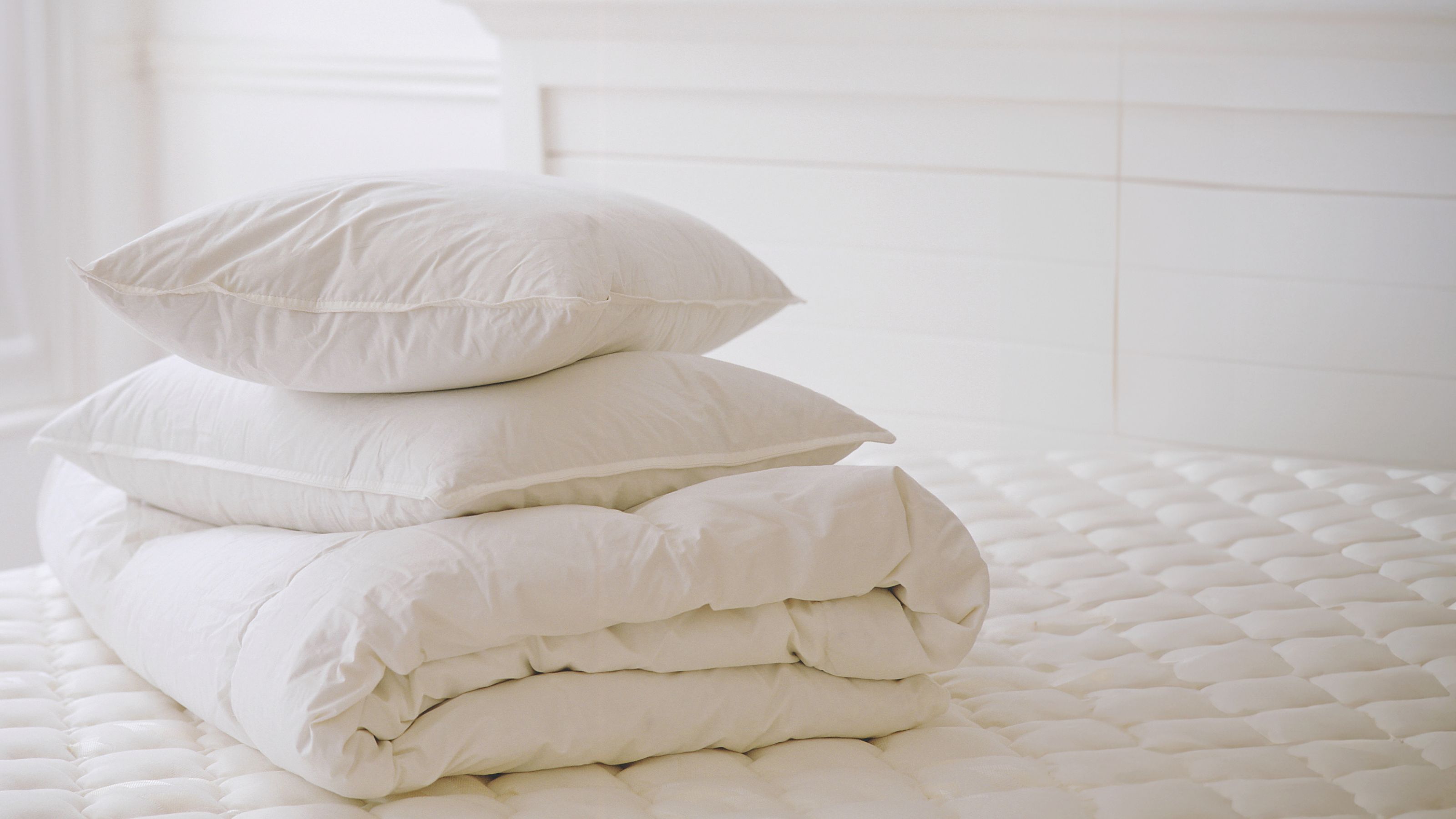

When shopping for a new duvet, there's a lot to consider, and one of the questions you might be debating is which is better, a feather and down duvet or a synthetic duvet?
As a sleep-product reviewer, I have tested the best duvets on the market, including big-name and small-brand feather, down, and synthetic duvets. I’ve tried duvets to suit all budgets and all types of sleepers, and as a result, I like to think I'm an expert in all things duvet-related.
That's why I'm here to break down the main differences between feather and down, and synthetic duvet fillings, to help you work out which is the best type of duvet filling for you.
As well as my hands-on experience, I’ve checked in with multiple bedding experts to get their take on the matter. What’s the hype around feather and down duvets – and are they worth the price tag? Or are synthetic duvets just as good? Let’s get into it.
What is a synthetic duvet?
A synthetic duvet is one that has man-made fibres as the filling, these are commonly called either hollowfibre or microfibre fillings. Both are made from polyester which is a man-made material manufactured from the fossil fuel petroluem.
This duvet fill may then have a cotton or polyester outer cover. 'The term ‘synthetic’ normally relates to the filling rather than the fabric,' confirms Neil McMillan, new product development director at bedding manufacturer Slumberdown.
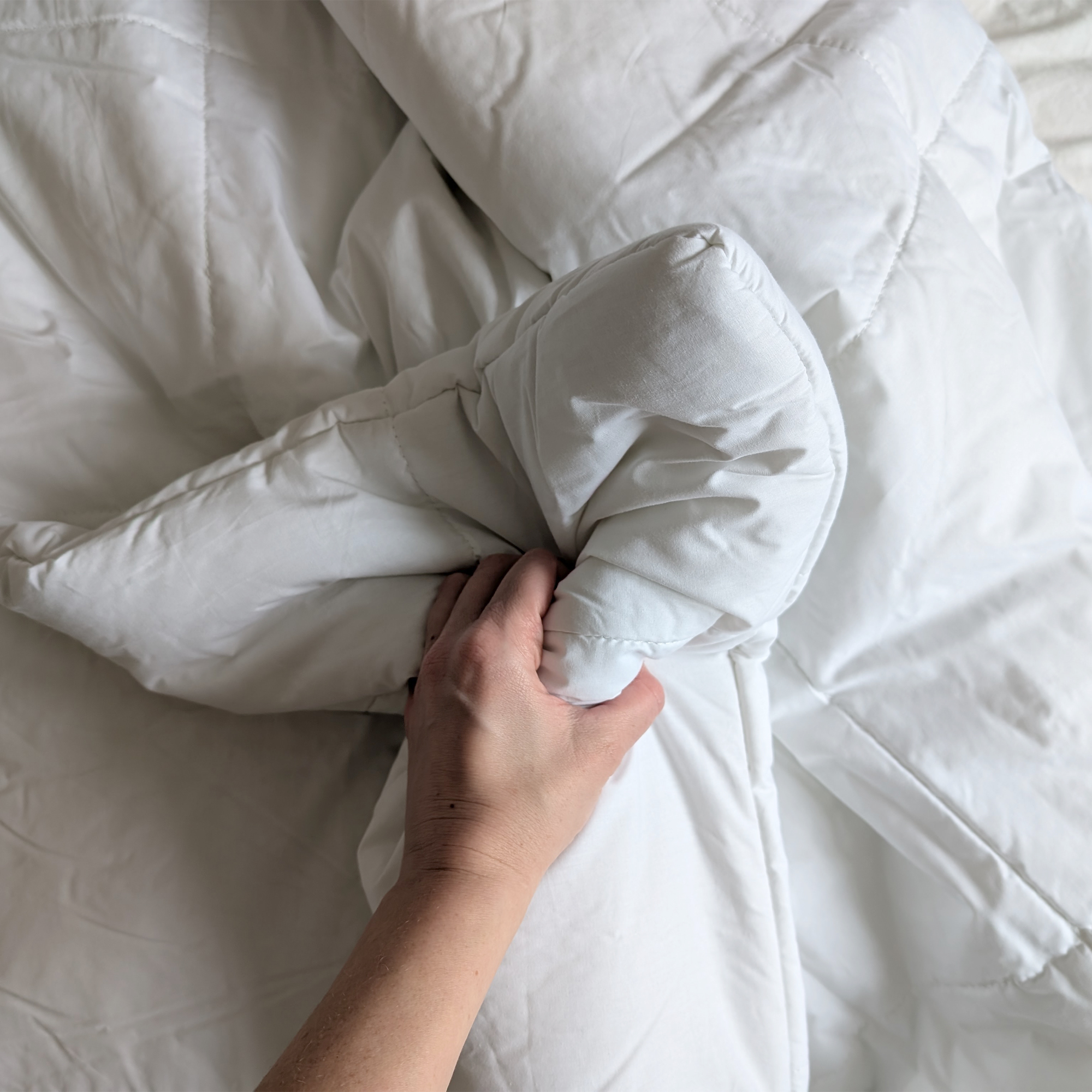
What are the advantages of synthetic duvets?
1. Affordable
A huge reason for the popularity of synthetic duvets is their affordability compared to duvets filled with natural materials. That's broadly because polyester is quicker to mass manufacture than natural materials are to grow.
Sign up to our newsletter for style inspiration, real homes, project and garden advice and shopping know-how
‘Synthetic duvets are generally a lower price point than duvets with feather, down or wool filling,’ confirms Neil from Slumberdown.
2. Easy to look after
Another huge plus point for synthetic duvets is that they’re easy to look after. The fibres are generally robust enough to withstand the washing machine, and can often be washed at higher temperatures than natural duvet fillings.
This is particularly useful for allergy sufferers who need to wash their bedding regularly to eradicate dust and dust mites, and makes synthetic duvets popular with parents of young children who want to throw their kids' duvets in the wash frequently.
‘Synthetic fillings retain their loft and shape even after repeated washing,’ explains Danielle Mason, head of product development at The Fine Bedding Company. 'These hardy fibres are great if you put your duvet through a lot – especially for young children and those who are prone to spills.'

3. Suitable for vegans
Unlike many natural-fibre duvets, synthetic duvets don’t use any animal byproducts in their main construction. That said, you might still need to consider whether the use of any glues or washing agents in the duvet's manufacture are vegan.
‘Most synthetic duvets are suitable for vegans as the fillings are polyester rather than down, feather or wool,' says Neil from Slumberdown, 'though be sure to check the composition.’
4. Can be hypoallergenic
It can be easier to find hypoallergenic synthetic duvets than natural-filled duvets. That's because the synthetic filling doesn't offer much enticement to dust-mites, so the filling is classed as being dust-mite resistant. As well as being grim, dust mites are the leading cause of house-born allergies in the UK.
‘Synthetic fillings are hypoallergenic so can be a good alternative for those with allergies – you’d just need to check the labels of the one you are buying,’ advises Neil from Slumberdown.
What are the disadvantages of synthetic duvets?
1. Less breathable
When you consider that the makeup of polyester is very similar to that of a plastic bag, it's easy to see why synthetic duvets can often lead to us waking up hot and sweaty. That's because they lack breathability, and air flow is what helps us to regulate our temperature overnight.
‘Lower-quality synthetic duvets that use a cheaper filling may not regulate temperature as effectively as natural options, leading to overheating,’ says Danielle from The Fine Bedding Company.
‘Cheap basic products tend to be heavier, less breathable and can be hot and stuffy, but higher quality blends will be lighter, fluffy and comfortable,’ agrees Neil from Slumberdown. ‘With synthetic duvets, you very much get what you pay for.’
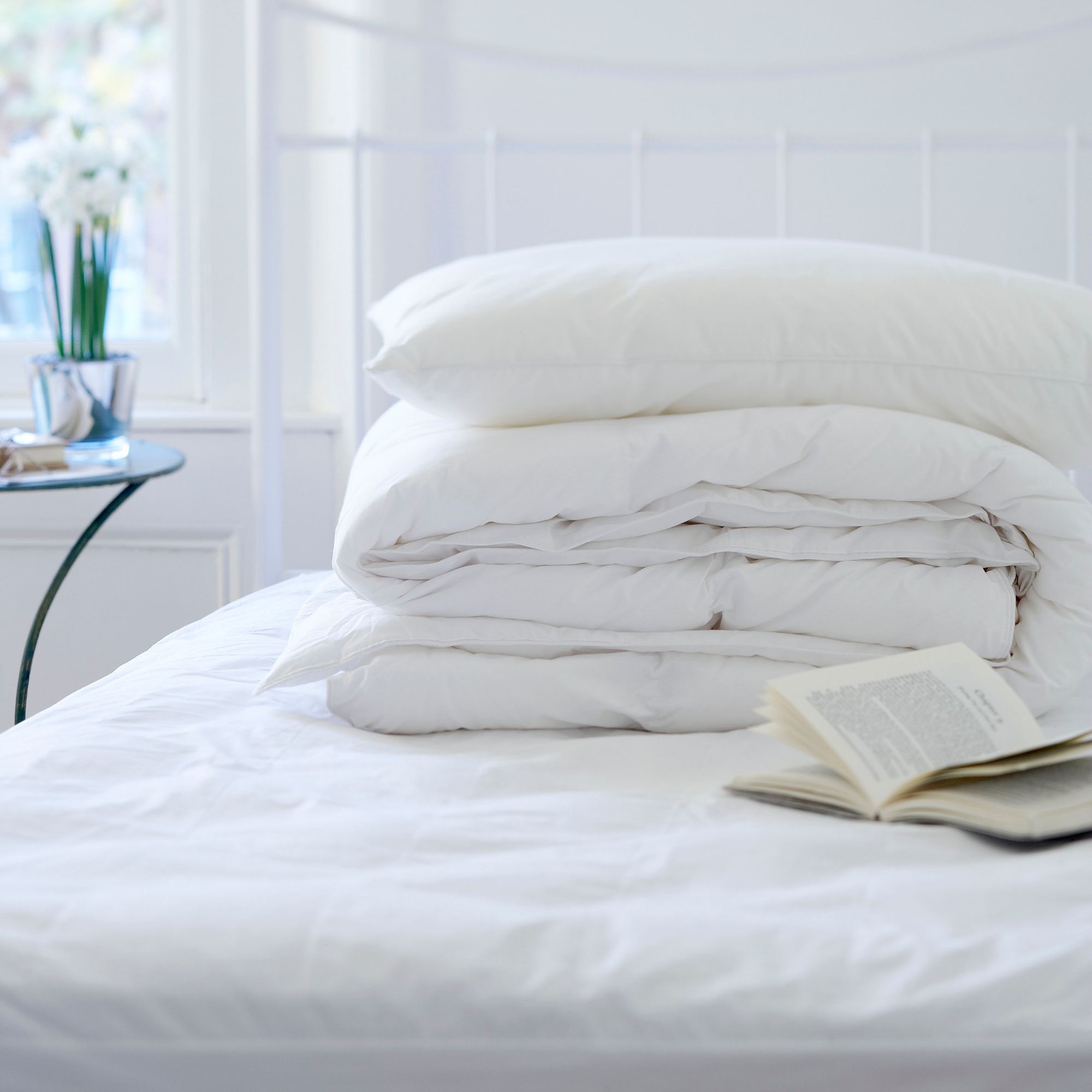
2. Can feel basic
You can get more expensive microfibre duvets that do a good job of mimicing the malleability of feather and down, but cheaper hollowfibre duvets can feel quite clumpy and stiff. These duvets don't tuck around your body very well and tend to feel 'cheap'.
‘Some synthetic duvets may lack the luxurious feel of natural fillings, and poor-quality versions can clump over time,’ says Danielle from The Fine Bedding Company.
3. Environmental concerns
A growing number of synthetic duvets are now made from recycled PET fibres. However, many are still made from virgin polyester, and that means the extraction of fossil fuels from the earth, which is damaging to the environment.
Most synthetic duvets also aren't biodegradable, so at the end of their lifespan, many end up in landfills where they cause more environmental damage.
What is a feather and down duvet?
Feather and down duvets are ones that are filled with duck or goose feathers and down. The feathers are more rigid and give the duvet structure, while down is fluffier and provides the insulation. The balance of feathers and down will affect the price of the duvet – a higher proportion of down will increase the price of the duvet.
What are the advantages of feather and down duvets?
1. As fluffy as a cloud
If you can afford a good quality feather and down duvet with a high down to feather ratio, there is no duvet softer and squishier. It literally is like sleeping under a cloud. They instantly give that five-star hotel vibe to your bed.
2. Very lightweight
Again, if you opt for a high-end feather and down duvet with a good down ratio it's one of the lightest duvet fillings you can buy. Good news if you're someone who doesn't like a lot of weight on top of them.
‘Investing in a premium natural duvet with a high down content is a smart choice as the soft, fluffy down filling is very light and lofty,’ says Neil from Slumberdown.

3. Great insulation
One of the key reasons why feather and down duvets are so popular is because they are fantastic at keeping warm air locked in next to your body without having to be really heavy.
‘[Feather and down] is an extremely good insulator so it will keep you warm without having a lot of weight in the duvet,’ explains Neil from Slumberdown.
4. Breathable
Down and feathers insulate the body without overheating you in the same way a synthetic duvet filling can – so you shouldn’t wake up as a hot sweaty mess under a decent-quality down duvet.
That said, if you're after the best temperature regaultation possible, you should also be checking out the wool vs feather and down duvet debate.
5. Biodegradable
As long as you opt for a feather and down duvet with a cotton rather than a polyester cover, then unlike a synthetic duvet, a feather and down duvet will biodegrade at the end of its lifespan, meaning it's kinder to the planet.
What are the disadvantages of feather and down duvets?
1. Can be expensive
There is no denying that feather and down duvets are often more expensive than their synthetic counterparts, and you need to invest a decent amount in a feather and down duvet to get the best quality.
2. Trickier to wash
When it comes to how to wash a duvet, a feather and down filling usually requires more TLC than a synthetic duvet. It can be done, but feathers are delicate and many feather and down duvets require dry cleaning or lower temperature washing. They also take a lot longer to dry than polyester filling.

3. Escaping feathers
Many of us may have had bad experiences with an old feather and down pillow or duvet that has sharp feather tips poking through. Generally, this occurs with cheaper products or bedding that's past its best. A good quality feather and down duvet should have a tightly woven cover that prevents this, and, of course, the higher the down percentage the less chance there is of a rogue feather quill.
4. Not great for allergy sufferers
Good quality feather and down duvets will have tightly woven covers that don't just stop feathers from escaping, but also prevent dust-mites from entering the duvet. They may also have a 'no-mite' coating, but it pays to check the details.
‘While high-quality covers can make them suitable for some allergy sufferers, those with severe sensitivities may prefer alternatives,’ advises Danielle from The Fine Bedding Company.
5. Need to check ethical standards of production
There is a good argument that feather and down is best left on the goose or duck where it belongs, and for many this duvet filling raises concerns over animal cruelty.
‘Always check the ethics and sourcing policies of a naturals duvet,’ advises Danielle from The Fine Bedding Company. ‘A low-priced natural duvet may be a sign of unethical feather-and-down sourcing. At The Fine Bedding Company all our naturals are DownPass certified meaning full traceability and zero-tolerance DOWNPASS standards, supporting sustainable consumption.’
It probably goes without saying, but feather and down duvets are not suitable for vegans.
Which is better, a feather and down or synthetic duvet? The verdict
As with so many things, which is better, a feather and down or synthetic duvet, really depends on your priorities.
If budget is a big concern, I think you’d be better off spending a bit more on a good-quality microfibre synthetic duvet than buying a lower-cost feather-and-down duvet.
Similarly, if ease of care and washability are important to you, a synthetic duvet is likely the more practical option.
However, if you want to invest in a hotel-quality night's sleep, I think it's hard to beat the luxurious feel of a high-quality feather and down duvet. Plus, if you're a cold sleeper, this is the best type of duvet filling for insulation.
Shop the best
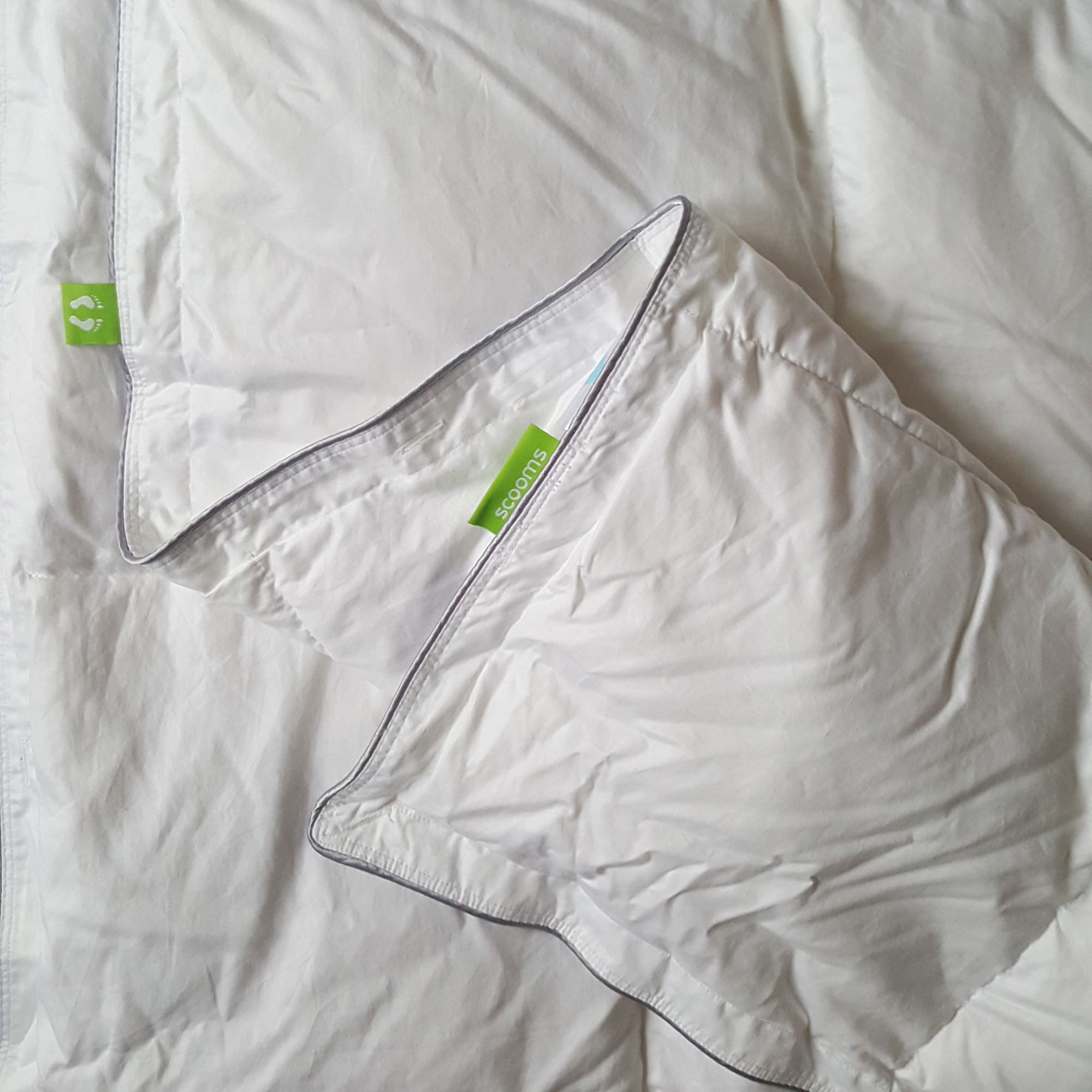
It's an investment, but this premium Hungarian goose feather-and-down duvet is one of the best we've tested.
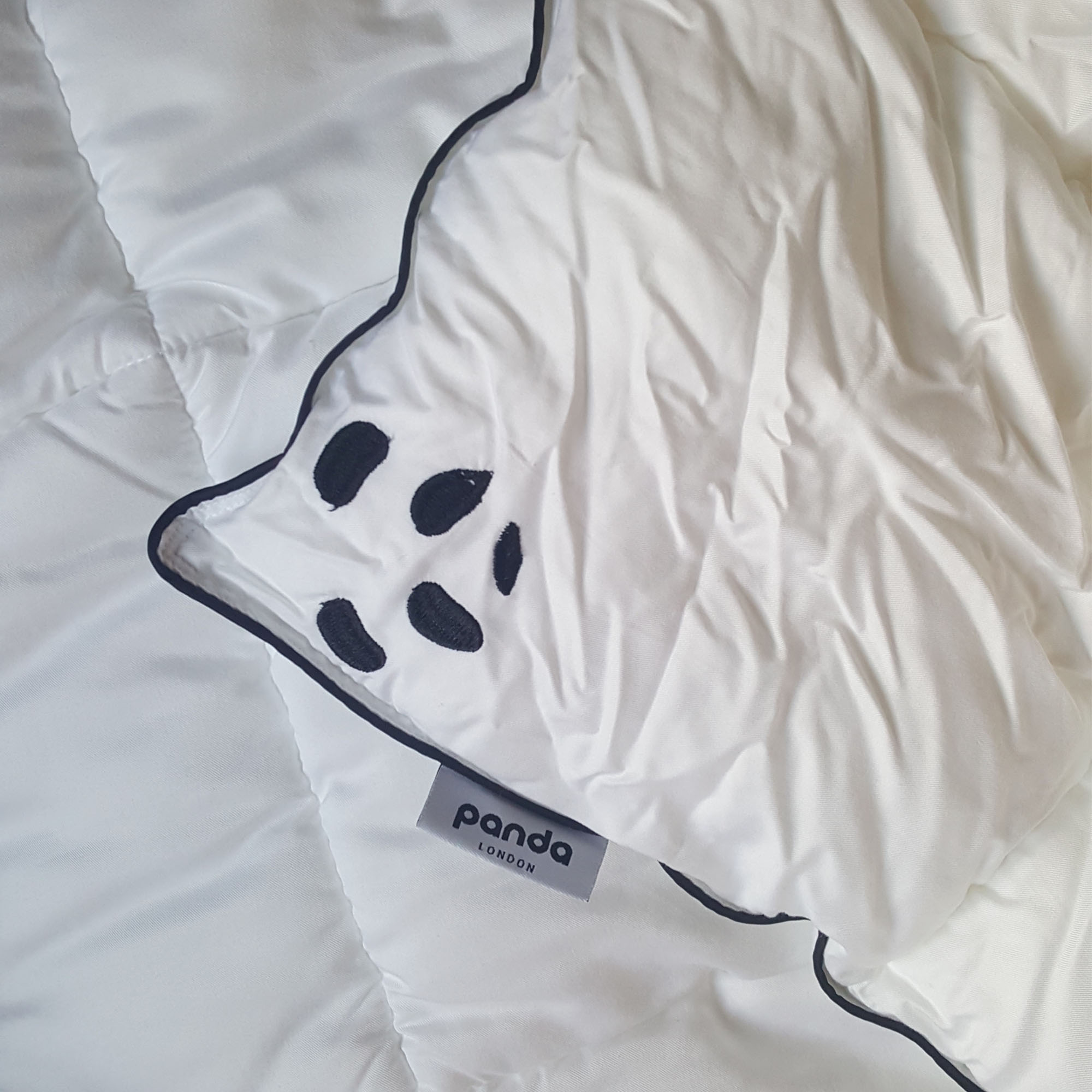
A microfibre duvet mixed with bamboo viscose, this synthetic-mix duvet is easy to care for and one of the best quality synthetic duvets we've tested.

This recycled polyester microfibre duvet is very affordable, plus it can be washed at 60°C and tumble dried for easy care.
FAQs
Is a synthetic or feather and down duvet better for hot sleepers?
As a cold sleeper, who sleeps next to a hot sleeper, I would personally advise feather and down if you can stretch to the cost. They’re more breathable on the whole, and help release heat and moisture before you wake up in a sweat.
Which is better for allergies, a synthetic or feather and down duvet?
‘A synthetic duvet is generally the best of the two for allergies but be sure to check it is hypoallergenic as not every duvet is,’ says Neil from Slumberdown.

Zoe is a freelance journalist and content strategist. Her career has traversed kids' publishing, women's lifestyle magazines, luxury property and content marketing. She's worked for the BBC, STYLIST, Marie Claire, heat, Wallpaper*, InStyle, The Sunday Times Style, Ocado, Christie's and more. She now regularly writes about interiors and sleep for a range of media – what she doesn't know about mattresses isn't worth knowing.
You must confirm your public display name before commenting
Please logout and then login again, you will then be prompted to enter your display name.